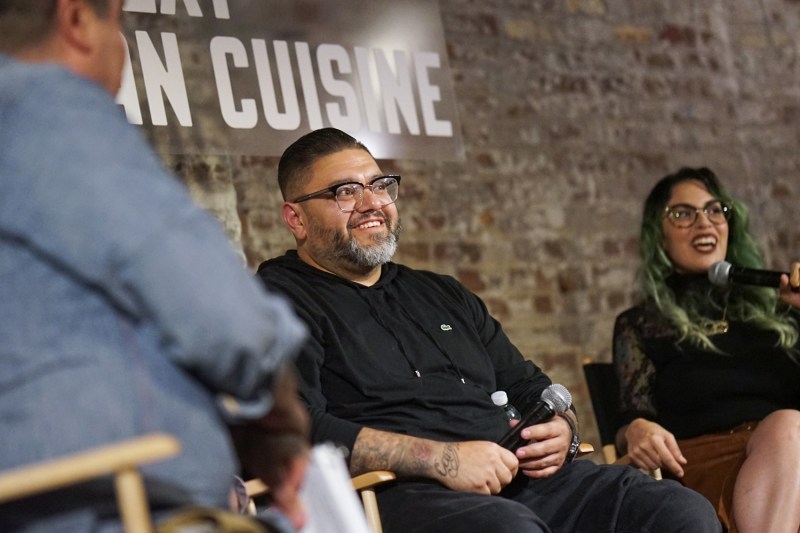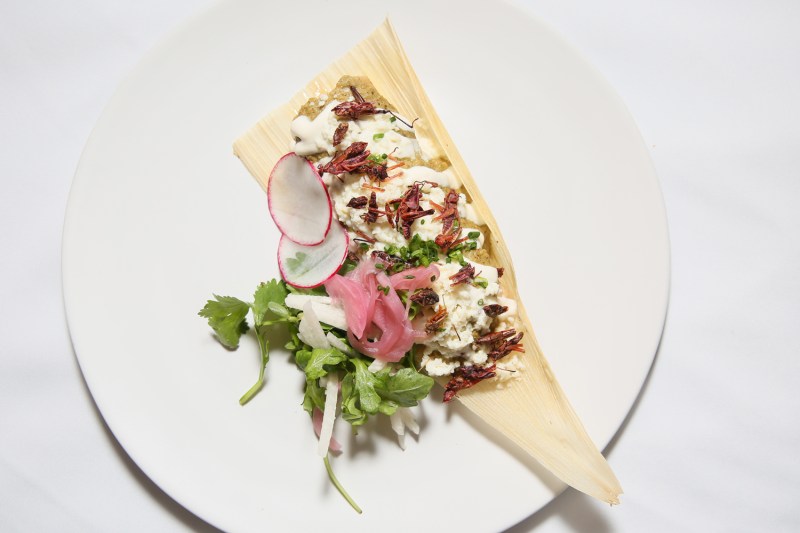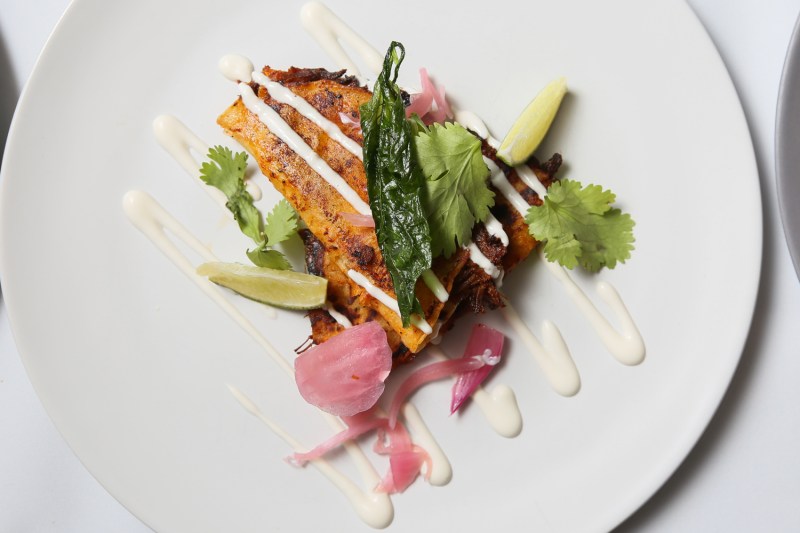
Near the end of a recent panel discussion sponsored by Mexican food brand Cacique, food writer Bill Esparza drove a crucial point home. “Every restaurant kitchen in the U.S. is a Mexican kitchen,” he said, referring to the large amount of restaurant workers from Mexico who work here, both legally and as undocumented workers. Without them, most restaurants could not function, something many Americans do not realize. The “What’s Next in Mexican Cuisine” panel was moderated by celebrity chef and restauranteur Aarón Sánchez, and also included James Beard Best Chef West semifinalist Chef Claudette Zepeda, Chef Thomas Ortega of Amor y Tacos in Los Angeles, and mixologist Alex Valencia of La Contenta in New York City. They had gathered to discuss the current state and future of Mexican food in the hospitality world, and they all had a lot of interesting things to say.
Mexican food, and “Mexican” food, is everywhere in some shape or form. You can order a chicken fajita rollup at Applebee’s, or spend an evening enjoying high-end cuisine at Enrique Olvera’s Cosme in New York City. In LA you can find a decent taqueria in almost every neighborhood; in strip mall New Jersey you can hit up a Taco Bell. Of course these are not equivalent experiences, but the point is that Mexican food is embedded into the fabric of the American culinary experience, or as Chef Ortega put it, “Mexican food is American food.” The point of this panel was not to denigrate subpar fast food versions of Mexican food. The point was to celebrate a cuisine that is as rich and varied as any other, if not more so, and to offer some insight as to where it is headed. And the timing couldn’t be more pertinent, as the Trump administration foments anti-immigrant rancor and literally tries to close the border between our country and Mexico.

While fusion can be a dirty word among foodies, Chef Ortega didn’t shy away from it. He talked about how growing up in Cerritos meant that he was exposed to many different cultures, something that ultimately informed his cooking. For example, a popular dish at his restaurant is a chile relleno hamburger. He believes that this trend that will continue into the future as rising young Mexican American chefs find ways to combine tradition and heritage with their social and culinary upbringing. For Zepeda, the goal is to teach her culture through her food. She honed in on how Mexican food has not truly been valued in this country in the way that other cuisines have, instead being viewed as food from “ethnic brown people.” But she hopes to change that by introducing people to the many different styles of food that are found throughout Mexico.
One trend the panel had a lot to say about is chefs around the country incorporating more insects into their dishes. As Zepeda put it, “Eating bugs shouldn’t just be on episodes of Man Vs. Food.” She talked about the roots of eating different types of insects in Mexican culture, and how it used to be a secret ingredient on menus but is now coming to the forefront. According to Valencia, insects like grasshoppers, worms, and even scorpions are being used in cocktails these days, sometimes as a garnish or sometimes as an actual element of the drink. Herbs that many Americans are unfamiliar with but have long traditions in Mexican cooking are also gaining in popularity, like hoja santa and epazote. “You used to find epazote growing on the side of the freeway,” said Sanchez, noting that these herbs are commanding higher prices as they increase in popularity.

The chefs entered into a lively discussion about the differences between flour and corn tortillas, with Esparza noting the 400-year history of the tortilla and how flour is more commonly used in northern states while corn is more prevalent in the south. There seems to be a general perception among Americans who know a little bit about Mexican food that corn is more “authentic,” but the panel discussed how that’s not necessarily the case. According to Sanchez, each one serves a purpose — he prefers beef or lamb in flour tortillas, while chicken, fish, and vegetables are more suited to corn.
Mexico City is considered by many to be the cultural and gustatory epicenter of Mexico, and Oaxacan food has become more familiar here in the U.S. But the chefs discussed other regions that have their own distinct cuisines that should start to gain more respect in the coming years. According to Ortega, Mexico City is the hub it is because it pulls in so many chefs from all different parts of Mexico. But the Yucatan and central Mexico have their own exciting dishes and cooking styles that should be explored further. Mexican wine is also a category that the panel predicted will become more popular, and Valencia said that many restaurants (Mexican and otherwise) will start to carry more varietals from the Valle de Guadalupe and other regions.

The takeaway from the panel’s discussion was that there is a bright future for Mexican food at restaurants and bars across America, and highlighting the diverse landscape it encompasses will help this beloved cuisine continue to gain respect. Cacique has posted some recipes from the participating chefs that you can try to make yourself at home.



